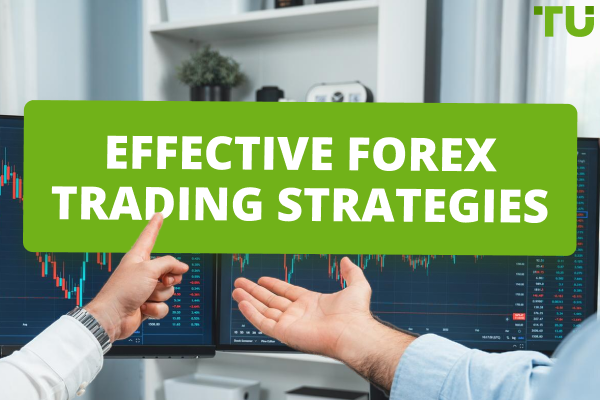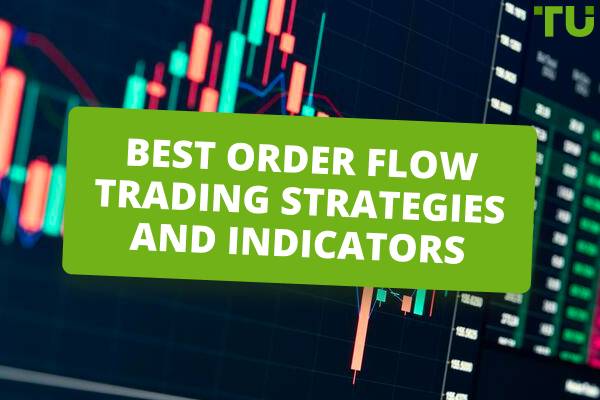What is position Trading - a full guide for beginners
Position trading is a long-term strategy where traders hold positions for weeks, months, or even years. It involves identifying major market trends through technical and fundamental analysis. Key aspects include trend identification, patience, risk management, and diversification. This method suits traders who prefer a less hands-on approach and are comfortable with long-term investment horizons.
Every trader and investor has his own trading preferences and strategy. Some traders prefer to open short-term positions to take advantage of short-term trends and make profits on these price movements. They are also called swing traders, and every small price movement counts for them. They usually take bigger risks.
Other traders prefer to invest their money for the longer term and follow a long-term trend. For them, small price movements are not important as long as the price of the asset follows the desired trend. These investors usually take a smaller risk. This investment strategy is called position trading.
In this article, you will learn more about position trading, what are its pros and cons, what strategy and indicators you should use, how to minimize your risks, and how to choose the best broker for position trading.
Glossary
Trading strategy is a set of rules and algorithms used for making decisions when trading in the Forex market. The trading strategies are based on either technical or fundamental analysis, and there are also combined trading strategies.
Indicator is a statistical model of processing specific criteria (price, trading volume, etc.), which show the traders the most likely development of price movement.
An investor is an individual, who invests money in an asset with the expectation that its value would appreciate in the future.
What is position trading?
In financial markets, when someone buys an asset, they open a position. Similarly, when they sell the asset they bought, the position is closed. A position can be kept open for a longer or a shorter period, depending on the trader’s preferences or the market situation.
Position trading is an investment strategy in which a trader open positions and keeps it open for a longer period. Most position traders keep their positions open for at least a few weeks, up to a few months. However, it is not uncommon for position traders to keep their positions open for a few years.
Position trading is often considered the same as a buy-and-hold strategy, but in a buy-and-hold strategy, investors open the position to take advantage of a rising price movement. However, in position trading, traders can also take advantage of a falling price trend by opening a “short” position.
What is a position trader?
A position trader is an investor who wants to take advantage of a long-term trend of an asset’s movement by opening a position for at least a few weeks. Position traders do not care too much about the price fluctuations of the asset they hold as long as they make profits in the end.
👍 Pros
• It is considered less risky than day trading or swing trading
• You do not have to spend a lot of time every day monitoring your trades
• You can receive dividends for the stocks you bought if you hold them for a longer period
👎 Cons
• If you do not choose the right asset to invest in, you can lose a lot of money over a long term
• Usually, position trading requires a bigger initial investment because it might not be profitable with a small capital
• You need a lot of money to start position trading because a part of your money is locked in a single trade
How to Build a trading system
No matter if they open long-term or short-term positions, every trader and investor should have an effective trading strategy. Here are some aspects you should consider when making a position trade:
Choose a timeframe
The timeframe you choose should correspond with the assets you want to buy. If you want to keep a position open for a very long term, a few years, for example, you should open a position on indices or ETFs because they tend to constantly follow an upward trend, and you might not make big profits if you keep it open for a shorter period. But if you want to keep a position open for just a few weeks or months, you should choose some well-performing stocks.
Identify trends of the assets you want to invest in
One of the best and easiest ways to identify the trend of an asset is to determine its support and resistance levels. But if you want to know how long that trend will last, you should use a few indicators, such as moving averages or alligator indicators.
Determine how much you want to invest in that trade
The amount of money you want to invest in a trade depends on your financial situation and how much you are willing to risk.
Identify the best entry-level
If you want to have higher profits, you should find the best entry-level for your position, based on the trend asset you want to invest in.
Identify the best exit level
After you open a long-term position, you should determine how long the price trend will last based on the indicators you follow if you want to gain maximum profits from that position. But you should occasionally monitor your position trades to determine how long you should keep them open.
Position trading indicators and tools
Position traders open positions for a longer period to follow a trend in the price movement of an asset, and they do not care too much about minor price fluctuations that happen during the time when they keep that position open. So, they will use different indicators and tools than swing traders.
Some of the most popular indicators used by position traders are resistance and support levels, Moving Average (MA), the Alligator indicator, and others.
Support and resistance levels
Support and resistance are, without a doubt, two of the most popular aspects of technical analysis. These terms are being used by investors to refer to spot prices on charts that generally behave as impediments, stopping the price of an asset from being pushed in a given direction as part of evaluating chart patterns.
A resistance level is a price at which the price of a stock starts falling because there is a big number of traders who want to sell at that price. Drawing a line along with the highest highs for a time period can be used to determine the simple resistance level in technical analysis.
Similarly, a support level is the price level below which an asset’s price does not fall for an extended period of time. When an asset's price falls, traders start buying that asset, and a support level is created. The simple support level can be tracked in technical analysis by drawing a line around the lowest prices for a certain time period.
Moving average (MA)
A moving average is an indicator that aims to predict a trend in the price movement of an asset based on its performance over a certain period. They can be used as support levels for an uptrend and resistance levels for a downtrend. There are moving averages for different periods, starting from a few days, up to 200 days or 30 weeks.
Position traders often use the 50 days moving average and 200 days moving average because they are considered more precise for long-term trends. Position traders might use two moving averages; a longer-term one, such as 200 days MA, and a shorter-term one, like the 50 days MA.
When the 50 days MA crosses above the 200 days MA, it is known as the “golden cross”; it indicates that the trend is shifting up. But when the 50 days MA crosses below the 200 days MA, it is called a “death cross”; it indicates the trend is shifting down.
Alligator indicator
The alligator indicator is a technical analysis tool that may be used in forex trading to indicate the beginning of a trend. Its major goal is to spot trends and determine where you should enter and exit a trade.
On a chart, the alligator indicator plots different moving averages (MAs). Each moving average symbolizes a part of the alligator; a blue line represents the jaw, a red line represents the teeth, and a green line represents the lips.
When the moving average lines are very close to each other, it means that the alligator is tired or sleeping. At this time, the trend is too weak, and traders do not open positions. But when the moving averages spread, it means that the alligator opens its jaws and is ready to hunt bears and bulls. In this case, the trend starts moving upwards or downwards, and traders start opening positions. But when the moving averages start closing, it means that the alligator is sated and the trend has ended, and traders close their positions.
Risks of positional trading
Position trading is considered less risky than other types of trading because this strategy is based on following a long-term trend and minor price fluctuations that might take place during that trend movement are not relevant for position traders.
However, no type of investment is risk-free, and investors can quickly lose money if the trend unexpectedly reverses during the time the position is open. To avoid big losses, position traders should be very careful when analyzing indicators and do great market research when opening a position trade.
Also, position traders should consider placing a trailing stop-loss order for their position orders. It is better to place a trailing stop loss because it helps traders secure a part of their profits.
Unlike in swing trading, the stop loss should not be placed too close to the opening price of the position. This is because there might be some considerable price fluctuations, but they are not significant during a trend movement, and you do not want your position to be closed during a trend movement you follow.
Is Position Trading Good For me?
Position trading can be a profitable trading strategy because it allows you to take advantage of steady long-term price movements of the price of an asset. Unlike other types of trading, you do not have to sit in front of the monitor looking for small trends and making small profits. However, as a position trader, you have to be ready to pay the whole value of the assets you buy and invest a bigger amount of money when you open the position and freeze it in that trade.
Position traders usually open “long” positions in the stock market because many stocks consistently grow in price over time, making them very big profits when they sell their stocks. The same strategy works for ETFs and index funds because their movement depends on the performance of the stocks they consist of.
Position traders usually do not open long-term positions in the Forex market because most currency pairs rarely have major trend moments. However, some position traders might open a long-term position on a currency pair if they think a minor currency will depreciate against a bigger currency.
The best strategy for position trading
The most common way to determine the price trend of an asset is to determine its support and resistance levels. Usually, they are determined by drawing an imaginary line across the highest highs and lowest lows for a certain period to determine the direction of the trend, which can be an uptrend or downtrend.
But to determine the best entry and exit points for a position trade, you should use other types of indicators, such as moving average or alligator. Depending on the indicator you use, you should use its specific signals.
For example, when a short period MA crosses above a long period MA, it indicates that the trend is shifting up. But when a short-term MA crosses below a long-term MA, it indicates the trend is shifting down.Learn the most useful Forex position trading strategies in TU article.
Which brokers are best for position trading
If you want to choose a reliable broker, you should pay attention to certain criteria. Here are some things you should pay attention to when choosing a broker for position trading:
Check-up Regulation
You should choose a regulated broker because a broker regulated by a reputable regulator provides better trading conditions and better protection for its users' funds.
Check selection of assets
When choosing a broker for position trading, you should choose a broker that allows you to invest in a big variety of assets that can bring you good profits in a position trade. These assets are usually stocks, indices, and ETFs. A large variety of these assets brings you more opportunities to make profits.
ay attention to the reviews
Before you create a trading account with a broker, you should first read reviews from its users. A big number of negative reviews should be a big turn-off for you, and it is safer to avoid that broker.
Low swap level
If you intend to place position trades on currency pairs, you should choose a broker with a small swap level for keeping these positions open overnight
Interactive brokers - best for stock trading
Since 1977, Interactive Brokers has been one of the most well-known investment firms in the United States. This broker allows its users to trade a big variety of currency pairs, stocks, CFDs, indices, metals, ETFs, futures, and other assets. It is regulated by the FCA and FINRA in the US, by FCA in the UK, and other international financial regulatoríes. It accepts clients from almost every country.
Interactive Brokers does not have any fees for buying and selling US stocks and ETFs. But if you want to trade non-US stocks, you have to pay a very small commission of the trade’s value that varies depending on the country you live in. It is usually around 0.05-0.1% of the trade value.
eToro - Best For Forex Trading
eToro is an online broker that was established in 2007 in New Jersey, USA. It is regulated by three reputable regulators, which are FCA in the UK, CySEC in the EU, and ASIC in Australia. eToro accepts users from over 140 countries and allows them to trade a wide variety of assets. This includes 2715 stocks, 49 cryptocurrencies, 33 commodities, 49 currencies, 13 indices, and 264 ETFs. It has a minimum deposit of $100.
This broker has very attractive trading conditions because it offers free stock trading, which means it does not charge any commissions when you buy or sell stocks or ETFs. Each time you buy or sell a cryptocurrency, you have to pay a preset amount of its value. For example, Bitcoin has a 0.75% fee, while Ethereum has a 1.9% fee. For Forex trading, the broker earns from the spread. The average EURUSD spread is 1 pip.
eToro Fees and Commissions ReviewSummary
Position trading can be a very profitable trading strategy for most traders because it allows them to make nice profits over time if they choose a lucrative asset and correctly predict a trend movement. If you want to open a long-term position, some of the best tools and indicators you can use are resistance and support levels, moving average, alligator, but you can use other indicators as well.
But you should remember that no type of investment is risk-free, and you should be very careful when placing position trades. To minimize the risks, you should have a well-put-together strategy and perform extensive market research before opening a position.
FAQs
How often do position traders open positions?
Position traders are considered passive traders, and they only place a few trades per year. Usually, they place around ten trades per year.
Is position trading more profitable than swing trading?
In position trading, the profits depend on the entry and exit price of the position. However, if you take into consideration all price movements within a long-term trade and place swing traders to take advantage of all of them, theoretically, your profits can be higher. But it is riskier, and you have to know exactly when to open and close a position if you want to make as much profit as possible. Also, you will pay more brokerage fees.
Can everyone start position trading?
Anyone interested in investing his money in an asset that follows a steady long-term price movement can start position trading. However, you should know how to correctly predict the direction of a trend movement if you want to make good profits.
What are the best assets for position trading?
When placing position trades, investors usually choose assets that have a proven track record of keeping an uptrend or downtrend. These assets can be big stocks, ETFs, or indices.
Glossary for novice traders
-
1
Trading system
A trading system is a set of rules and algorithms that a trader uses to make trading decisions. It can be based on fundamental analysis, technical analysis, or a combination of both.
-
2
Investor
An investor is an individual, who invests money in an asset with the expectation that its value would appreciate in the future. The asset can be anything, including a bond, debenture, mutual fund, equity, gold, silver, exchange-traded funds (ETFs), and real-estate property.
-
3
Brokerage fee
A brokerage fee, also known as a commission, is a fee charged by a brokerage or financial institution for facilitating and executing financial transactions on behalf of clients. Brokerage fees are typically associated with services related to buying or selling assets such as stocks, bonds, commodities, or mutual funds.
-
4
Ethereum
Ethereum is a decentralized blockchain platform and cryptocurrency that was proposed by Vitalik Buterin in late 2013 and development began in early 2014. It was designed as a versatile platform for creating decentralized applications (DApps) and smart contracts.
-
5
Diversification
Diversification is an investment strategy that involves spreading investments across different asset classes, industries, and geographic regions to reduce overall risk.
Team that worked on the article
Oleg Tkachenko is an economic analyst and risk manager having more than 14 years of experience in working with systemically important banks, investment companies, and analytical platforms. He has been a Traders Union analyst since 2018. His primary specialties are analysis and prediction of price tendencies in the Forex, stock, commodity, and cryptocurrency markets, as well as the development of trading strategies and individual risk management systems. He also analyzes nonstandard investing markets and studies trading psychology.
Also, Oleg became a member of the National Union of Journalists of Ukraine (membership card No. 4575, international certificate UKR4494).
Dr. BJ Johnson is a PhD in English Language and an editor with over 15 years of experience. He earned his degree in English Language in the U.S and the UK. In 2020, Dr. Johnson joined the Traders Union team. Since then, he has created over 100 exclusive articles and edited over 300 articles of other authors.
Mirjan Hipolito is a journalist and news editor at Traders Union. She is an expert crypto writer with five years of experience in the financial markets. Her specialties are daily market news, price predictions, and Initial Coin Offerings (ICO).














